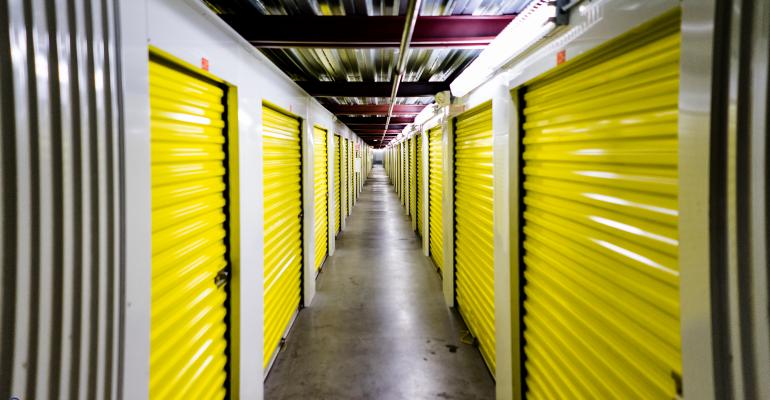In the first week of June, Nick Walker listed a self-storage property for sale. The facility is fully-leased and producing income.
“We received 17 offers,” says Walker, executive vice president in the Los Angeles office of CBRE Capital Markets.
He is not alone. Across the U.S., self-storage properties are attracting interest from long lists of eager potential buyers. On average, self-storage properties have already performed well in the first few months of the economic crisis caused by the novel coronavirus—and most properties seem likely to continue to perform well once the U.S. economy starts to rebound. The strong performance of the self-storage sector has already broadened the interest of buyer types, including drawing interest from private equity funds along with more traditional investors like REITs and small, private investors.
“For cash-flowing self-storage properties, a wave of buyers is entering the space,” says Walker. “We have seen investment sales come roaring back.”
Strong performance, so far, for self-storage
Self-storage properties lost some business in the early months of the crisis as governors around the country ordered most non-essential businesses closed to slow the spread of the coronavirus. But self-storage properties have already begun to recover while other sectors lag due to how state reopening plans are playing out.
“The storage industry once again performed well, just as it did through the Great Financial Crisis,” says Brian Somoza, managing director for JLL.
Self-storage facilities were typically considered “essential” businesses and remained open even as most of their potential customers worked from home and limited their trips. During these months, the number of customers who signed new leases for self-storage spaces fell sharply. “Velocity of move-ins went down by half in most of March and April,” says CBRE’s Walker.
As fewer people moved-in, rents fell for self-storage properties. National street rates for 10-ft.-by-10-ft., climate-controlled units fell 6.0 percent in April 2020, compared to the year before. That’s the largest decline in more than three years, according to Yardi Matrix. Rates for 10-ft.-by-10-ft., non-climate-controlled units fell 2.6 percent.
Rates for move-ins fell more sharply. “Rates for new storage leases are down between 5 percent and 15 percent depending on the local market,” says H. Michael Schwartz, executive chairman of SmartStop Self Storage REIT.
Other national REITs report move-in rates that dropped as much as 20 percent, according to Walker.
However, at the same time as few people moved-in, very few people moved out of their self-storage spaces in March, April and May. As a result, the percentage of self-storage space that is occupied rose.
"Numerous large operators are claiming occupancy and rents have recovered over the last month," says Ryan Clark, director of investment sales for SkyView Advisors, based in Tampa, Fla.
Self-storage properties are supporting many other essential businesses that are having to alter their operations during the Pandemic, in addition to people like college students, who may have had to unexpectedly change their living arrangements as universities closed.
“Self-storage is a needs-driven business, and what we know about the needs for self storage is that they exist in both good and bad economic times,” says SmartStop’s Schwartz. In SmartStop’s own portfolio, the percentage of storage space that was occupied dipped slightly in April, then stabilized. “As a whole, rent collections at SmartStop Self Storage facilities have been virtually unchanged on a year-over-year basis during the March-June pandemic months.”
The crisis has also removed at least one worry that has troubled the self-storage business. Fewer new projects are likely to open this year. “Prior to the pandemic the asset class was experiencing a significant growth in supply, which was impacting rental rates across many markets,” says Skyview’s Clark.
The crisis caused by the coronavirus changed all that. “The onset of the pandemic has put a stop to many new developments that weren’t already moving dirt,” says Schwartz.
New buyers chase self-storage deals
The relative strength of self-storage properties is attracting new buyers.
“We’re experiencing interest from equity groups pivoting from retail and hospitability verticals into storage and industrial sectors,” says JLL’s Somoza.
These deals are just being negotiated now—and are likely to close in the coming months. The new activity is a change from the peak of the pandemic, when the market to buy and sell properties paused along with the rest of the U.S. economy.
“We anticipate that year over year industry wide sales volume will be down in 2020. That said, our firm has closed four deals over the last 10 days and buyer sentiment has strengthened since March and April,” says Skyview’s Clark. “With the global hunt for yield ongoing, self storage continues to present an opportunity.”
These investors are most interested in the predictable income provided by stabilized self-storage properties.
“Stabilized assets in markets without significant new supply risk factors have seen very little impact to their pricing, whereas risk assumptive lease-up and certificate of occupancy deals have experienced a shrinking and more conservative buyer pool,” says Clark.

